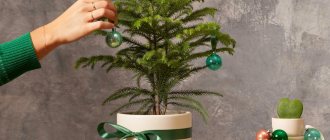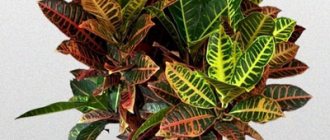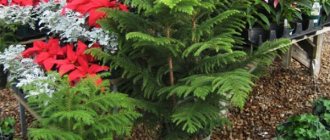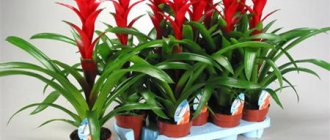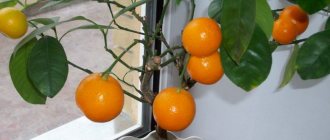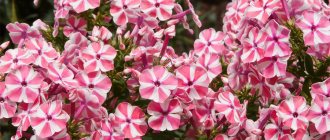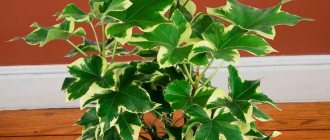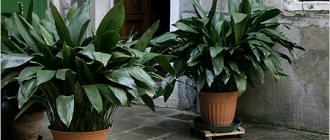Author: Parizhanka
September 28, 2022 09:16
Community : PhotoWorld
Tags: Araucaria interesting plants photo coniferous tree
5631
6
1
Araucaria is a coniferous tree from the Araucariaceae family. Appearing more than 200 million years ago, it is considered a living fossil. In its natural environment, it is distributed in South America, Africa, Crimea, and the homeland of araucaria is Norfolk Island, located in the Pacific Ocean between New Zealand and Australia.
0
Source:
See all photos in the gallery
In nature, the evergreen plant grows up to 55 m. Its rough branches are densely covered with light green needles with a pronounced resinous odor. Araucaria is a rare coniferous tree that can be grown at home. At home, it can live up to 10 years, growing by almost 20 cm per year. Indoor araucaria reaches no more than 2 m. Like all conifers, the plant does not bloom, but forms spherical fruits similar to large nuts. Be sure to pay attention to such wonderful plants as Livistona and rubber ficus.
Caring for araucaria at home. Briefly
0
Source:
Araucaria at home, unlike other conifers, grows without any problems. But you need to know the preferences of the plant: this will help to avoid possible difficulties: Temperature regime In winter - no higher than + 18°C, in summer - + 23°C. Air humidity More than 50%; Frequent spraying is required. Lighting Diffused bright, tolerates slight shading. Watering in Winter - once every 10 days; in summer - abundant, twice every 7 days. Soil Universal substrate for indoor plants, mixed with substrate for rhododendron and azalea; a mixture of 2 portions of peat soil, leaf soil, perlite and 1 part of turf soil. Feeding and fertilization Do not fertilize in winter; in spring and summer – with diluted universal fertilizer for indoor plants, once every 14 days. Replanting Young trees - every year, adults replant once every 3.5 years; does not tolerate transplantation well. Reproduction by seeds or apical cuttings. Features of cultivation There are features of growing araucaria. To grow a beautiful, healthy tree, it must be kept cool in winter. To form a symmetrical crown, the araucaria is turned to the light in different directions. In summer, the plant is taken out to the balcony or garden.
Description of the plant and species
The culture comes from the Southern Hemisphere. It is a coniferous evergreen perennial plant. External description and characteristics vary depending on the variety. Often trees growing in open ground reach 40-60 m, the record height is 90 m. Indoor araucaria does not exceed 1.5 m, since it is difficult to create an optimal environment at home. By shaping the crown, you can grow a small bonsai tree.
The plant is spreading, the branches are fluffy, the needles are bright green, flat, soft, located close to each other. The tree is valued for the phytoncides it produces that purify the air. Externally, araucaria resembles a homemade Christmas tree in a pot. The trunk is straight, the branches extend from it at right angles. The bark is scaly and resinous. The crown depends on the variety, often pyramidal or umbrella-shaped. The culture is dioecious, producing elongated male cones and round female cones. The latter are larger in length (15-20 cm) and weight (up to 1.5 kg).
Externally, araucaria resembles a homemade Christmas tree in a pot.
On a note! Household araucaria does not bloom.
There are 21 species in total, some of them:
- Chilean is distinguished by a wide pyramidal crown, starting directly from the surface of the ground in young plants, later forming a flat umbrella located at the very top of the head;
- araucaria Budvilla prickly, leaves 2.5-7.5 cm long, in mature trees half of the trunk remains without branches;
- Brazilian or narrow-leaved grows at an altitude of 500-2300 m above sea level, the shape of the crown is similar to an umbrella;
- wedge-shaped looks like a narrow column, the branches are relatively short, widening slightly at the top;
- Heterophyll is also found under the names variegated or tall; it is the one that is grown at home and is distinguished by the change in the shape of the leaves from needle-shaped to scale-shaped after the plant matures.
Priming
Araucaria needs a breathable and loose substrate. A nutritious, slightly acidic (pH 5.3 – 6.2) soil is suitable for it. You can make the soil mixture yourself by taking 1 part turf soil, 2 parts perlite, peat soil and leaf soil. You can buy ready-made soil for conifers or a universal substrate for indoor plants and mix it with the substrate for azaleas and rhododendron. Be sure to add crushed pine needles, coal powder, chopped sphagnum, foam balls or brick chips to the soil mixture.
Care errors
Improper care of a coniferous mini-tree leads to various problems that need to be addressed urgently:
- The needles dry out and fall off - lack of moisture or too high air temperature.
- The lower branches fall off - stress from replanting, lack of light or too hot in the winter. In sufficiently mature plants, the trunk becomes bare naturally. So there is no need to sound the alarm about this.
- The needles turn pale, the branches droop - winter transplantation, lack of light, draft or hypothermia. It is unlikely that the plant will be saved.
- The tree has stopped growing - improper pruning of the top or an excess of calcium in the substrate.
- Sagging branches - excess moisture and excessive increase in air temperature.
- Shedding of needles and bending of the trunk - moving the tub with the tree to another place, causing the plant to become stressed.
Transfer
0
Source:
Young araucarias are replanted annually. Coniferous plants do not tolerate transplantation well, so mature araucaria is transplanted infrequently, once every 3.5 years. By this time, the roots have completely engulfed the earthen ball. Transplanting should be replaced by transshipment to help the tree survive stress. In adult plants, the top layer of soil is refreshed, but the container is not changed. The roots of araucaria are very sensitive to any influence; in order to protect them, the old soil lump on the roots is preserved. The root collar cannot be buried: the tree will first stop growing and then die. After transplantation, araucaria needs support. For several days it is placed in a shaded place and often sprayed. After 14 days they feed.
Diseases, pests
Araucaria is considered a pest-resistant plant . Sometimes it is affected by mealybugs, a pest of coniferous plants. Externally, small lumps of cotton wool appear on the needles.
You need to moisten the brush with alcohol and gently wipe the needles. Can be treated with the chemical drug Aktara.
Indoor araucaria is sensitive to errors in care - if it does not have enough light and/or watering, the needles begin to turn yellow and fall off. But in general, with constant care, you can admire your own Christmas tree for a long time and breathe in the aroma of pine needles all year round.
Reproduction
Araucaria can be propagated by seeds and cuttings.
For vegetative propagation, exclusively apical or intermediate stem cuttings are taken. Rooted side branches can produce asymmetrical growth. The shoot is cut a few centimeters below the node (whorl of lateral branches). It is dried for some time so that the resin hardens. Then you should carefully remove the resin from the bottom of the shoot, dip the bottom in dry Kornevin and plant it up to the level of the whorl of branches in sterile soil (or a peat tablet). Be sure to place the planted plant in a greenhouse with a temperature of about +25°C. Rooting occurs in approximately 2-4 months.
Trimming the crown can lead to loss of decorativeness of the plant.
Araucarias can be propagated by seeds . It is better to take seeds immediately after collection, since germination rate drops sharply over time. Sow one seed at a time in small containers filled with a mixture of peat and sand, lightly moisten and place in a warm place. However, araucaria seeds may germinate unevenly, from 2 weeks to several months. At first, seedlings develop very slowly.
|
Chilean Araucaria (Araucaria araucana)
This evergreen conifer amazes us with its height, which can exceed 60 m. The trunk has a circumference of one and a half meters. This species is native to Chile and Western Argentina. The tree is characterized by a wide pyramidal crown configuration. The lower shoots are located on the surface of the ground and fall off with age. The side shoots are formed in the form of a whorl of six to seven pieces, hanging slightly. With age, the crown of the tree takes on an umbrella-like appearance, with shoots located only at the top of the tree. The branches are covered with leathery leaves with sharp ends. The leaves have a rigid structure and dark green color, arranged in a spiral, covering the entire surface of the shoot. The resin of this tree is used in folk medicine, and the seeds are used as a delicacy.
Needles and cones
Araucarias are conifers and have much in common with the usual spruce, fir or even pine. Close branches in the form of false whorls make it easy to determine the age of the trees and create a resemblance to the conifers we are used to, but the shapes of the needles are different .
If the general appearance of the representatives of the genus is quite similar, then the structure of the leaf apparatus of individual species of Araucaria is externally different. The needles arranged in a spiral in some species look more like leaves with an extended sharp tip, while in others they look more like needles.
The needles stay on the trunks for a long time, and species of the genus Araucaria are characterized by branch fall, which over time leads to the cleansing of the trunk and the formation of an umbrella-shaped crown. In general, the process is typical for light-loving breeds. In this they are similar to pine trees and grow in ecologically similar areas.
Araucaria cones are spherical or elongated-ovoid, large, up to 35 cm long, woody. The seed and covering scales are fused; the seeds are immersed in the tissue of the scales and, after ripening, fall off along with them.
Araucaria cunninghama female cone contains exposed seeds
Araucaria columnar cones
How does it reproduce?
Araucaria is mainly propagated by cuttings, but you can try to grow a Christmas tree from seeds - however, this will take a lot of time and require some patience.
Cuttings
Cuttings, unlike planting seeds, are carried out in July, not in spring:
- for planting, young cuttings are taken from the tops of the crown,
- the cut cuttings are dried for about a day, then the lower part is cleaned of resin, wiped with ash or fine coal,
- cuttings are planted in a prepared mixture of sand and peat, well moistened, then they are covered with film (you can use a jar),
- seedlings must be watered, sprayed, film removed daily for ventilation and access to oxygen,
- Low temperatures should not be allowed during the rooting period - ideal for future Christmas trees is 25-26 degrees.
At the end of October, the cuttings will acquire an extensive root system and can be transplanted into separate pots.
Seeds
Germination and further survival of the seeds is poor. For planting, it is recommended to take fresh, just collected seeds. Even after storage for two to three weeks, sprouts may not appear, as the seeds will lose their viability:
- the seeds are sown in very moist soil and must be covered with a layer of moss on top, which is constantly moistened,
- the temperature in the room where the pot is located should not fall below 20 degrees and rise above 26,
- as soon as the seedlings hatch, they need to be removed from a sunny place,
- grown bushes are thinned out - leaving a distance of at least 10 cm between shoots, then each sprout is transplanted into a separate pot.
In the future, care for short plants is carried out in the same way as for adults.
The soil
In what conditions does Araucaria prefer to grow? For araucaria, soil that has a slightly acidic reaction is important.
You can buy such a substrate, or you can prepare it yourself.
It is prepared on the basis of soil collected from a coniferous forest (up to 30%), pine litter (about 10%), sand (no more than 10%), peat and turf soil, taken in equal quantities.
The soil for araucaria may have a different composition. It may include in equal parts:
- Leaf soil;
- Turf land;
- Coniferous land;
- Peat;
- Sand.
Such soil will be water permeable. In flower shops you can buy ready-made soil mixture for araucaria. Also suitable is purchased soil for rhododendrons , which, like soil for conifers, has a slightly acidic reaction and contains a peat component.
Application
Since Norfolk pine is a heat-loving plant and sometimes suffers from frost even in the Caucasus and the Black Sea coast, it is not found in open ground in more northern areas. In landscape design, this beauty can only be used in warm countries. In countries with a more severe climate, it can act as a tub plant in hallways, winter gardens, and greenhouses. In a pot it can become a decoration for the festive table on New Year's Day.
It is useful to grow an indoor Christmas tree at home for people suffering from bronchial asthma because of its ability to release phytoncides. Disinfects indoor air all year round, filling it with a pleasant forest aroma.
It is useful to grow an indoor Christmas tree at home for people suffering from bronchial asthma because of its ability to release phytoncides.
Due to the strength of the wood, Araucaria received the name ironwood. They build houses from it, make furniture and musical instruments. Its seeds are edible and taste like pine nuts.
